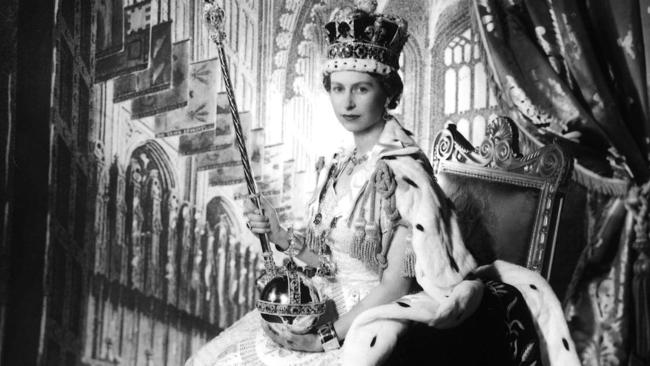Record crowns Queen Elizabeth II’s reign of duty and dignity
Although she seems to have coasted to a record-breaking reign Queen Elizabeth II has not always had an easy time of it

Today in History
Don't miss out on the headlines from Today in History. Followed categories will be added to My News.
Queen Elizabeth II is today officially the longest reigning monarch in British history, finally surpassing the record of 63 years, 216 days set by Queen Victoria.
Although it could be said Elizabeth has lived a life of privilege during her six decades-plus in the job it hasn’t always been plain sailing. She has done remarkably well for a person who was not born to be queen and was brought to the throne by a scandal that rocked the monarchy. She has also weathered her own personal struggles and scandals during her reign.
When Elizabeth was born in 1926 her grandfather George V was still alive and she stood behind her uncle and her father in the line of succession.
When King George died in 1936, she moved to second in line. When her uncle abdicated to marry an American divorcee, passing the crown to her father King George VI, she became heir apparent.
SENSE OF DUTY
During WWII the king refused to leave London as bombs rained down on the city. Buckingham Palace, with Elizabeth and her family in residence, survived a direct hit. Her father’s stoicism and sense of duty would stand as an example for Elizabeth when, at the age of just 25, she became queen.
At the time her father died in 1952 she was in Kenya, on the first part of a tour meant to include New Zealand and Australia.
It took four hours for word of the death to reach her.
When her husband, Prince Philip the Duke of Edinburgh, broke the news to her she reacted calmly, discussing details of funeral arrangements, but she later spent an hour alone in her room grieving.
Her relationship with her father had been close and warm and, while she had been given an education befitting a future monarch, there was still much she could have learnt about leadership from her father.
TESTING TIMES
Her first test was her sister Princess Margaret’s affair with the divorced, much older, Captain Peter Townsend, a member of King George’s staff, in 1953. The Queen withheld her consent, under advice, and cabinet refused to approve the marriage. Margaret later released a statement saying she had decided not to marry Townsend.
At her coronation in 1953 Elizabeth inherited a largely ceremonial role over a rapidly shrinking empire.
While she could have faded into irrelevance, the Queen toured former colonies helping to keep them in the Commonwealth as they transitioned from colonies to independent nations.
In the 1950s she was criticised for opposing Britain’s failed attempt to seize back the Suez Canal after it had been nationalised by the Egyptians. She would also, unfairly, come under fire for her appointment of Harold MacMillan as prime minister in 1957 and Earl Home in 1965, accused of being out of touch. In truth she did not have much choice in either appointment, constitutionally speaking.
FAMILY TROUBLES
Another cause of concern in the 1970s was the love life of her son Charles, Prince of Wales, the heir apparent. A string of romances had failed to end with marriage and the birth of a second in line to the throne. When he did finally marry Diana Spencer in 1981 the marriage faltered and the couple separated in 1992 (they divorced in 1996).
The Queen called 1992 her “annus horribilis”. The monarchy was deeply unpopular at the time, seen as irrelevant and a drain on the public purse during a time of recession. Elizabeth made the unusual gesture of agreeing to pay taxes.
When Diana was killed in a car accident in 1997 the Queen’s failure to publicly acknowledge the nation’s grief or fly the palace flag at half mast brought condemnation. The situation was defused when the Queen gave a statement on television talking about her admiration for Diana.
Over the past two decades she has done much to modernise, liberalise and restore some of the reputation of the monarchy.
ELIZABETH V VICTORIA
ALTHOUGH Elizabeth has now reigned for a similar period of time to her great-great grandmother Victoria, at through a very different period in history, there are points of similarity.
Both ascended the throne at a young age, Victoria was 18 and Elizabeth 25. Both came to the throne in a long period of peace after major global conflicts, respectively the Napoleonic War and World War II.
But while Britain’s empire was expanding in Victoria’s time, under Elizabeth it was breaking up. Dozens of nations would gain independence under Elizabeth, yet Britain went to war to keep the Falkland Islands, a conflict that saw her son Andrew go into battle.
Originally published as Record crowns Queen Elizabeth II’s reign of duty and dignity



